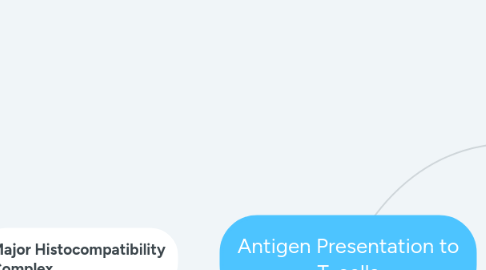
1. Antigen Recognition
1.1. CD8 molecules bind MHC class I molecules which bind peptides recognized by CD8 T cells
1.1.1. Pathogen surveillance and cell lysis
1.2. CD4 molecules bind MHC class II molecules which bind peptides recognized by CD4 T cells
1.2.1. CD4 T-cells need to activate to become effector cells
1.3. Antigens are processed in vesicular compartments and cytosol
1.4. MHC Class I
1.4.1. DCs capture exogenous proteins and load derived peptides
1.5. MHC Class II
1.5.1. DCs and macrophages, capture exogenous proteins via endocytosis, specific cell surface receptors or peptides can be derived from cytosolic proteins via autophagy
2. Cellular Peptide Generation
2.1. Protein degration occurs in cytosol
2.1.1. Mostly by proteasome
2.2. Proteins are marked for degradation with ubiquitin molecules
2.2.1. Molecules for a chain recognized by the proteasome
2.2.1.1. Short peptides are released into cytosol
2.3. Peptides taken up by ER and bound to MHC class I molecules
2.3.1. Transported to the surface with TAP
2.3.2. Once MHC class I molecules are bound they are released from ER an transported to cell surface
2.4. Allows CTLs to detect and destroy pathogen-infected cells
3. Major Histocompatibility Complex
3.1. Polygenic
3.1.1. Contains several different genes creating MHC class I and II molecules with different ranges of peptide-binding specificities
3.2. Polymorphic
3.2.1. Multiple alleles of each gene

